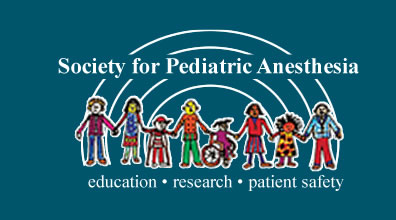Panel Review:
Anesthesia and Sedation Outside the OR: New Paradigms – New Rules

By Cheryl K. Gooden, MD, FAAP
Mount Sinai Medical Center
The Sunday morning panel moderated by Joseph Cravero, MD (Dartmouth Hitchcock Medical Center) provided an overview of sedation practice models, and the implications for the future of these practices. On the current topic, much has been gained through the “Pediatric Sedation Research Consortium.” He reflected on the fact that the ultimate goal is to improve the process and outcomes of pediatric sedation. Various sedation models exist and are explored by this panel.
The first speaker, Debra Morrison, MD (Irvine Medical Center) presented “New Rules” and the impetus for change from the old rules. Dr. Morrison highlighted the process by which changes were made in her institution with regards to moderate and deep sedation policies. The changes had an impact across multiple disciplines. These changes included new policies, practice guidelines, credentialing, advanced life support certification, computer based training, and new forms for documentation and recording. All patient records were entered into a database and outcomes as well as compliance could be followed. She pointed to new directions with the incorporation of simulation of critical scenarios. Dr. Morrison realized that change was necessary for the sedation practice and developed a new system that really works.
Swati Patel, MD (Mattel Children’s Hospital) presented “Sedation Services Staffing for Success.” Dr. Patel identified a number of sedation service models that are currently in use in various institutions. She defined the goals of a sedation service and these include optimizing patient safety with the provision of similar standards of care throughout the institution, minimizing anxiety, improved use of hospital resources, the treatment of pain associated with the procedure, and finally satisfactory completion of the procedure.
Through several recent studies, Dr. Patel focused on the positive impact that the creation of the sedation service has made on the delivery of care to pediatric patients. This can best be accomplished through appropriate training and credentialing of all providers. To a certain extent, standardization across subspecialties is a requirement. Dr. Patel concluded with an emphasis on team training and team planning.
The final speaker in this panel was Lucy Everett, MD (Mass General Hospital for Children) who presented “Pediatric Anesthesia and Sedation Outside the OR: Developing Institutional Infrastructure.” Dr. Everett presented an overview of what is involved in establishing and maintaining pediatric anesthesia and sedation services. She provided us with good information from a marketing perspective, and an understanding of our customer / patient needs.
Dr. Everett highlighted a pre-anesthesia assessment tool that has been streamlined and has led to a more efficient system. However, she also pointed out that educating our patients and parents with regards to the perioperative process is crucial. In fact, the education process should involve all staff caring for the patient. Finally, Dr. Everett emphasized recognition of the system needs as part of patient focused care within the provision of quality care and value.


